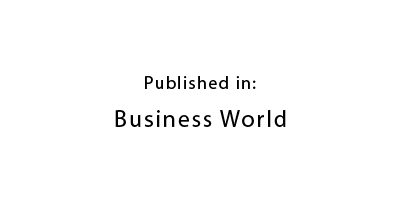Living under the shadow
... The common lines in the stories about such brands are that they once existed or that they play on the periphery. There are hundreds of them but the chances of any, rising to become a competitor is just about one in hundred..........................................
Today, if I were C K Ranganathan, I would bitterly regret the decision to name the fairly successful fairness cream as Fairever. Perhaps, with the brand resisting to race any more, even he could be feeling so. May be not. Even most in marketing may trounce my take, citing the success. That's very true and I am all with those who applaud the Fairever success. About 80 crores pa in 8 years is indeed business done exceptionally well. But good business does not necessarily reflect good brand potential. My hunch is that from now on, the brand would find it hard to snatch any more share of the market. Against the market opportunity, the catch so far too is pretty short. Look at it this way. About 8% market share in 8 years and struggling grow - - in a market that is inviting with just one giant unyieldingly gripping more than 80%. Even in the south where Fairever is fully present the share is only about double that. Now, doesn't that tell - - something is wrong?
It does and I bet; it's the Name. Setting it in tune with the leader-brand makes it devoid of any core potential. As I see it, Fairever is now facing worse discomfort from Fair & Lovely than it brought to bear on that brand through the years. Take-on brands have just two chances. They either wither out sooner or later or speed into a hard-to-grow trap later or sooner. No, I am not implying any kind of dead-end for Fairever. Surely, its sales would continue to tick, as well, possibly better. But that may not yet lift its market share.
Spite-you brands are aplenty. They usually prevail in pockets away from active competition. Here's a set to know them. Have you heard of Allo, the Polo look-alike? Recently, I was duped into eating the wrong sonpapdi by a Haldiram clone with the pack imitated flawlessly to fool-and-sell. Know the name? Hariram! And, of course I can't miss to mention the brands that tried to ride on the brand I once worked for - Kurlon. Coiron, Reston, sherlon, sleepon, kozylon - - it goes on. None could ever manage to even tickle Kurlon. Hycol is another brand I know of, that tried to stick around with Fevicol but fell unstuck. The common lines in the stories about such brands are that they once existed or that they play on the periphery. There are hundreds of them but the chances of any, rising to become a competitor is just about one in hundred. The life-span of these brands depends on the level of market maturity and the promoter's maturity in understanding that. The Allo type are sure to vanish but arise from sound business logic the spirited entrepreneurs are fully conscious about. They turn-in money. In ensuring that the promoters do not think long-term or promotions. The task is more about packaging and placing and less about product. The trick is to just plug into opportunity. They are never perceived as challengers nor do they seek such attention. Make hay… is the strategy.
The brands that speed into a pit-stop are the ones more meaningful than Allo. The promoters of such brands hope to make it some day. The intent is declared in the name, typically coined to rhyme with the leading brand. Not a casual take, but chosen as a matter of strategy to enter and fight. A classic branding mistake yet widely believed to trigger success. These brands hang on till they find the toil unworthy. As said, one in hundred, ride through the opportunities in the market aggressively, progressively adopting professional methods to overwhelming success. But, once they pick up pace they speed - - straight into the hard-to-grow trap. Tellingly, at this point the market share of the brand suffers from an up-now, down-now syndrome. Beyond this point the company would find the investments in marketing not really yielding. The truth is that take-on brands succeed for reasons anything but the name. In fact, they succeed in spite of the name. Growing demand served by immature competition characterized by just one giant happens to be the most common reason. Invariably, low price is the strategy that puts such brands afloat. In time, smartly managed ones grow till they are done making a segment out of it. Fairever has achieved this convincingly and would move only with the segment. The task now on is more about defending than conquering.
Success apart, these brands lack the potential for progressive branding. Unbelievably, the cap is fixed by the sound of their name, which casts them into a default position signified by the words - - imitator; inferior and never, contrary to the belief of the promoters, as challenger. Fairever, Fairglow and any brand that rhymes with Fair & Lovely would be perceived as underdogs and remain so. Even Fair One, empowered by another brand - shahnaz husain, is no exception. Every move to promote tease-you brands would only remind consumers of their status as such, simultaneously upholding the superiority of the targeted brand. Miming names are flawed fundamentally. Even the instant awareness they generate is intrinsically negative. If differentiation is the way to build brands, imitating the competitor's name is surely wrong thing to do. I can almost hear arguments; how else to call a fairness cream without the word Fair? Well, the very question suggests a challenge and within it an opportunity as well.
What's the way out to compete when a successful brand hits the limit? No options, you need another brand. Not an extension but an independent one, that can knock the leader off your shoulders. Mantra is right but is flawed in execution. Removed totally away from Fairever, it has the potential to help Cavin Kare snatch as much share in half the time it did with Fairever. And now, Emami, a visibly brand conscious company has launched a right product - - with a wrong name. Fair & Handsome. The mistake is in choosing the most logical and apparently right name. Here again the name puts the cap on the possibilities irrespective of market opportunity.
31 October 2005
Copyright: Adve Srinivasa Bhat, India.











